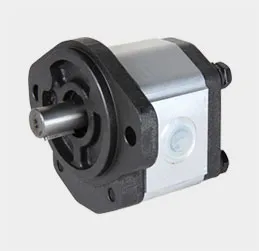sheet metal stamping design
Sheet Metal Stamping Design An Essential Component of Modern Manufacturing
Sheet metal stamping is a crucial process in modern manufacturing, enabling the creation of diverse and complex components used across various industries. This manufacturing technique involves creating parts by deforming sheet metal through the application of high pressure, typically using a stamping press. The design of the stamped parts is vital, as it directly influences functionality, cost effectiveness, and manufacturability.
Understanding the Basics of Sheet Metal Stamping
Sheet metal stamping can be defined as a series of operations that involve shaping and cutting sheet metal into desired forms. These operations may include processes such as blanking, piercing, bending, and forming, which can be combined into a single production run. The process can be applied to a wide range of metals, including steel, aluminum, copper, and alloys. The choice of material often depends on the application, required strength, weight, and resistance to corrosion.
Key Considerations in Stamping Design
When designing stampings, several key factors must be considered to ensure that the parts meet quality standards and production efficiency. These include
1. Material Selection The choice of material is critical. Designers must consider mechanical properties, thickness, and the characteristics of the metal, such as its ability to be formed and the potential for springback after forming.
2. Part Geometry The complexity of the part's design significantly affects production costs and capabilities. Simple designs are easier and more cost-effective to manufacture, while complex geometries may require advanced tooling and longer production times.
3. Tolerance and Fit Tight tolerances can be challenging and costly to achieve. Designers should specify tolerances that are necessary for function while considering the capabilities of the stamping process, as well as the post-stamping operations such as assembly.
sheet metal stamping design

4. Tooling and Die Design Effective stamping relies heavily on high-quality tooling and die design. The die must be engineered to produce the desired shape while accommodating material flow, minimizing scrap, and allowing for easy tool changes if necessary.
5. Assembly and Integration The design of stamped parts should consider how they will fit within the larger assembly. Features like holes, slots, and flanges can facilitate assembly and reduce reliance on additional fasteners.
6. Cost-Efficiency The design phase should also focus on reducing manufacturing costs. This can be achieved by minimizing material usage, reducing the number of operations, and simplifying the part layout.
Trends Shaping the Future of Stamping Design
As technology continues to evolve, so too do the techniques and tools used in sheet metal stamping. The incorporation of computer-aided design (CAD) and computer numerical control (CNC) technology is transforming how designs are developed and executed. These technologies allow for more precise modeling of parts, enabling designers to visualize and analyze how materials will behave during stamping processes.
Moreover, advancements in materials science are opening doors for using new lightweight materials, which can significantly enhance the performance of stamped parts without compromising strength. Manufacturers are increasingly adopting eco-friendly practices, focusing on sustainable materials and minimizing waste—a trend that will only grow as environmental regulations become more stringent.
Conclusion
In conclusion, effective sheet metal stamping design is a foundational aspect of modern manufacturing that impacts a wide array of industries, from automotive to electronics. By considering material selection, part geometry, tolerances, tooling, assembly, and cost-efficiency, designers can create components that not only meet their functional requirements but also enhance overall production efficiency. As technology continues to advance, the future of sheet metal stamping design promises to be innovative and resource-efficient, securing its place as a critical component of industrial progress.
-
Precision Sheet Metal Stamping Manufacturer | Fast & ReliableNewsAug.01,2025
-
OEM Sand Cast Pump Valve Fittings - Baoding Hairun Machinery And Equipment Trading Co., Ltd.NewsAug.01,2025
-
Custom OEM Impellers | High Efficiency & PrecisionNewsAug.01,2025
-
OEM Sand Cast Pump Valve Fittings - Baoding Hairun Machinery | Customization, Quality AssuranceNewsAug.01,2025
-
OEM Sand Cast Pump Valve Fittings - Baoding Hairun Machinery And Equipment Trading Co., Ltd.NewsAug.01,2025
-
OEM Sand Cast Pump Valve Fittings - Baoding Hairun Machinery And Equipment Trading Co., Ltd.NewsJul.31,2025















